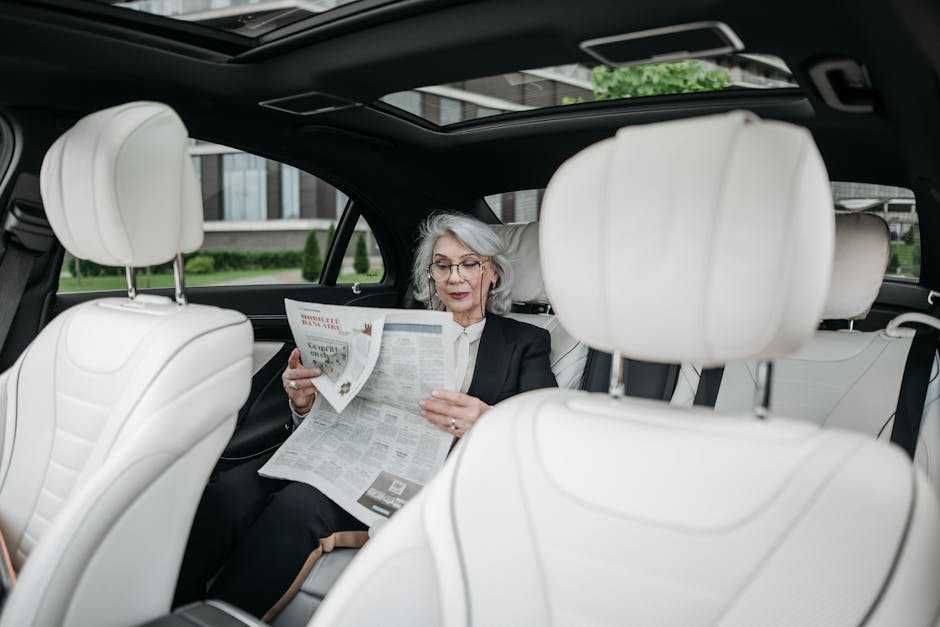Overview of Augmented Reality in Automobiles
Augmented Reality (AR) technology embeds digital information into the real world. In automobiles, AR offers drivers enhanced situational awareness. By integrating visual data onto the windshield, drivers receive critical information without diverting their eyes from the road.
AR applications in vehicles range from navigation to safety alerts. GPS directions appear directly on the windshield, highlighting the correct route. This minimizes distractions, promoting safer driving conditions. Hazard detection is another key feature. AR can identify obstacles or pedestrians in real-time, projecting warnings onto the display.
Entertainment options also expand through AR. Passengers could enjoy scenic information about surroundings or gaming experiences overlaid on the window view. Manufacturers like BMW and Audi are early adopters, incorporating AR into their models. These innovations indicate a trend towards more immersive and interactive driving experiences.
Key Benefits of AR in Vehicles
- Improved Navigation: AR’s turn-by-turn directions on the windshield reduce the need for secondary screens.
- Enhanced Safety: Real-time hazard alerts and obstacle detection create a safer driving environment.
- Increased Engagement: Entertainment and informative overlays keep passengers engaged during long trips.
Current Implementations
- BMW: Their AR displays show navigation cues and hazard alerts, enhancing driver awareness.
- Audi: Focuses on navigation and vehicle performance metrics projected onto the windshield.
- Jaguar: Implements AR to provide safety alerts and navigation assistance for a safer, more informed driving experience.
Future Developments
Future AR systems may leverage 5G and AI to provide even more sophisticated features. Predictive maintenance alerts, adaptive navigation, and personalized driving assistance are potential enhancements. Automakers will likely integrate these advanced AR systems to offer a seamless and safer driving experience.
How Augmented Reality Windshields Work

Understanding how augmented reality windshields function gives insights into their transformative capabilities in the automotive industry.
Core Technologies
Several core technologies enable AR windshields to function. Display technologies, like heads-up displays (HUDs), project images directly onto the windshield. These displays use various methods, including laser projection and liquid crystal displays (LCD), to render crisp, clear images visible even in bright sunlight.
Sensors and cameras continuously collect data from the vehicle’s surroundings. For instance, lidar sensors measure distances to objects, while cameras capture real-time visuals. The system processes this data to generate relevant AR content.
AR software integrates with these hardware components to overlay digital information onto the physical world. By using algorithms and machine learning models, the software ensures real-time updates, accurately positioning digital images on the windshield. For example, navigation arrows align perfectly with the roads, and hazard alerts appear exactly where a threat exists.
Integration with Existing Systems
AR windshields integrate seamlessly with a vehicle’s existing systems. The car’s onboard computer serves as the central hub, processing data from the GPS, sensors, and cameras. This integration enables the AR system to pull real-time information directly from these sources.
GPS systems provide critical location data. AR overlays like navigation routes and points of interest become dynamic and contextually relevant through this integration. Safety features, such as forward collision warning, utilize sensor data to highlight potential hazards on the windshield, giving drivers immediate awareness.
Vehicle-to-everything (V2X) communication networks enhance the functionality of AR windshields. V2X allows the vehicle to communicate with other vehicles, infrastructure, and pedestrians. This connectivity enables the AR system to display information about traffic signals, upcoming road conditions, and pedestrian crossings, thus improving overall situational awareness.
The fusion of AR technology with existing automotive systems ensures that augmented reality windshields are not standalone gadgets but integral parts of modern, intelligent vehicles.
Potential Benefits of AR Windshields
AR windshields offer several advantages that can transform the driving experience. Here are some key benefits.
Enhanced Safety
AR windshields significantly improve safety by providing real-time hazard alerts. They highlight obstacles, pedestrians, and other vehicles, ensuring drivers can react promptly. For instance, if a car suddenly brakes ahead, the AR system projects a warning on the windshield, helping avoid collisions. By integrating data from sensors and cameras, AR windshields deliver precise and timely safety information.
Improved Navigation
Navigation becomes more intuitive with AR windshields. Directions are displayed directly on the road view, minimizing the need to glance at separate GPS screens. This reduces distractions and helps keep attention on the road. For example, navigation prompts appear as overlays on the road, guiding turns and lane changes seamlessly. The combination of visual cues and real-time data ensures more accurate and stress-free driving.
Informative Displays
AR windshields deliver valuable information without crowding the driver’s view. Speed limits, fuel levels, and traffic conditions are displayed contextually, offering relevant data at a glance. For example, speed limits and upcoming road signs appear directly in the driver’s line of sight. This continuous flow of information promotes better decision-making and enhances the overall driving experience.
Challenges and Limitations
While augmented reality (AR) windshields promise a futuristic driving experience, several challenges impact their widespread adoption.
Technological Barriers
Advanced AR windshields rely on precise calibration and robust hardware. I see technical hurdles in achieving accurate image overlay, especially with varying light conditions. The hardware, including HUDs and sensors, must perform flawlessly in diverse environments like urban areas and rural landscapes. The integration of AR with vehicle systems requires high-processing power and seamless connectivity, which are currently evolving but not fully optimized for mass adoption.
Cost Considerations
Integrating AR technology into windshields significantly increases vehicle costs. High-end components like sensors, cameras, and specialized displays aren’t cheap. For instance, luxury car brands like BMW and Audi, which feature AR windshields, usually pass these costs to consumers, making these technologies accessible primarily to the premium market. Reducing costs without compromising quality presents a critical challenge for manufacturers aiming to bring AR windshields to mainstream vehicles.
Privacy Concerns
AR windshields gather immense data from sensors and cameras, potentially raising privacy issues. Detailed information about driving habits, routes, and interactions with the vehicle environment gets collected. If improperly managed, this data can be exploited, leading to privacy breaches. Ensuring robust data protection measures and clear privacy policies are essential to address these concerns and build consumer trust.
Future Trends and Developments
The future of augmented reality (AR) in car windshields looks promising, driven by rapid advancements in technology and strategic industry collaborations.
Advancements in AR Technology
Recent advancements in AR technology are enhancing its application in automotive windshields. High-resolution display systems, including transparent OLEDs, are getting integrated to project clearer and more vibrant images. Artificial intelligence (AI) further refines AR overlays by predicting and adapting to driving conditions. This technology improves the accuracy of navigation prompts and hazard alerts in real-time. For example, AI can analyze patterns in traffic data to provide adaptive routing suggestions, ensuring a smoother drive.
Collaborations and Industry Partnerships
Key collaborations among tech companies, automotive manufacturers, and software developers are accelerating the deployment of AR windshields. Companies like WayRay, partnered with Porsche, are developing holographic AR systems, pushing the boundaries of what’s possible. Intel and BMW’s collaboration aims to create advanced in-car experiences using AR. These collaborations ensure interoperability and innovation, making AR technology more accessible to a broader range of vehicles.
Regulatory Considerations
AR windshields must comply with evolving regulations to ensure safety and privacy. Authorities like the National Highway Traffic Safety Administration (NHTSA) and European Automobile Manufacturers’ Association (ACEA) are setting standards for AR systems in vehicles. These regulations cover aspects such as the brightness of displays to prevent driver distraction and data privacy concerns related to the extensive information collected by AR systems. Compliance will play a crucial role in the widespread adoption of AR technology in vehicles.




